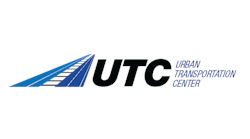Explosive growth in technology is spawning new services that can and should be integrated with public transit to dramatically improve mobility throughout metropolitan Chicago, especially for those who don’t own a car or lack viable transit options.
More needs to be done to provide people with the transportation options they need to reach jobs, schools and other destinations. Among the recommendations: broaden the role of public transit agencies to achieve mobility goals, change the way transit systems are funded, and adopt a commute trip reduction program.
Those were among the conclusions from a recently-completed report that analyzed existing transit services and challenges within the Chicago region and identified ways to deliver affordable, reliable and abundant mobility options.
The report, “Increasing Mobility Through Enhanced Transit Connectivity,” was produced by the Urban Transportation Center at the University of Illinois at Chicago. Researchers undertook the study with this underlying goal: “Everyone in the Chicago area should have integrated, ubiquitous and affordable mobility options, while public and private resources are used efficiently and effectively toward that end.”
Chicago has an extensive fixed route transit system, and transit agencies have offered new fare technology and implemented many innovations over the years, researchers point out. However, many people in the region live or work in places that lack viable transit options.
Other findings from the report include:
- New technology will soon allow people to summon and pay for multiple ride sharing services from a single app on their handheld device. This technology should be expanded to enable consumers to plan, book and pay for public transit and all other mobility options from the same app.
- Well-known recent transit innovations – protected bike lanes, the Divvy ride share network, and the Loop Link bus rapid transit service – are reshaping Chicago transportation for the better. Less known are the efforts of suburban bus agency Pace to develop and expand paratransit in under-served areas. But many gaps remain.
- Good ideas from other places could help fill service gaps in the Chicago region. One example – partnerships between transit agencies and ridesharing firms to provide curb-to-curb flexible service for the general public in areas that lack regular bus service.
- Private transportation management associations (TMAs) can be effective in partnering large businesses with Pace to provide shuttle services for workers who take Metra trains to reach jobs in the suburbs. This service has worked for the Lake-Cook TMA and could be useful in other suburban job corridors.
The report was prepared by UTC researchers James C. LaBelle and Sheena F. Frève. Funding was provided by the Center for Urban Transportation Research (CUTR) at the University of South Florida.
Download the full report at: https://utc.uic.edu/wp-content/uploads/Increasing-Mobility-through-Enhanced-Transit-Connectivity-LaBelle-Freve-8-15-16.pdf



